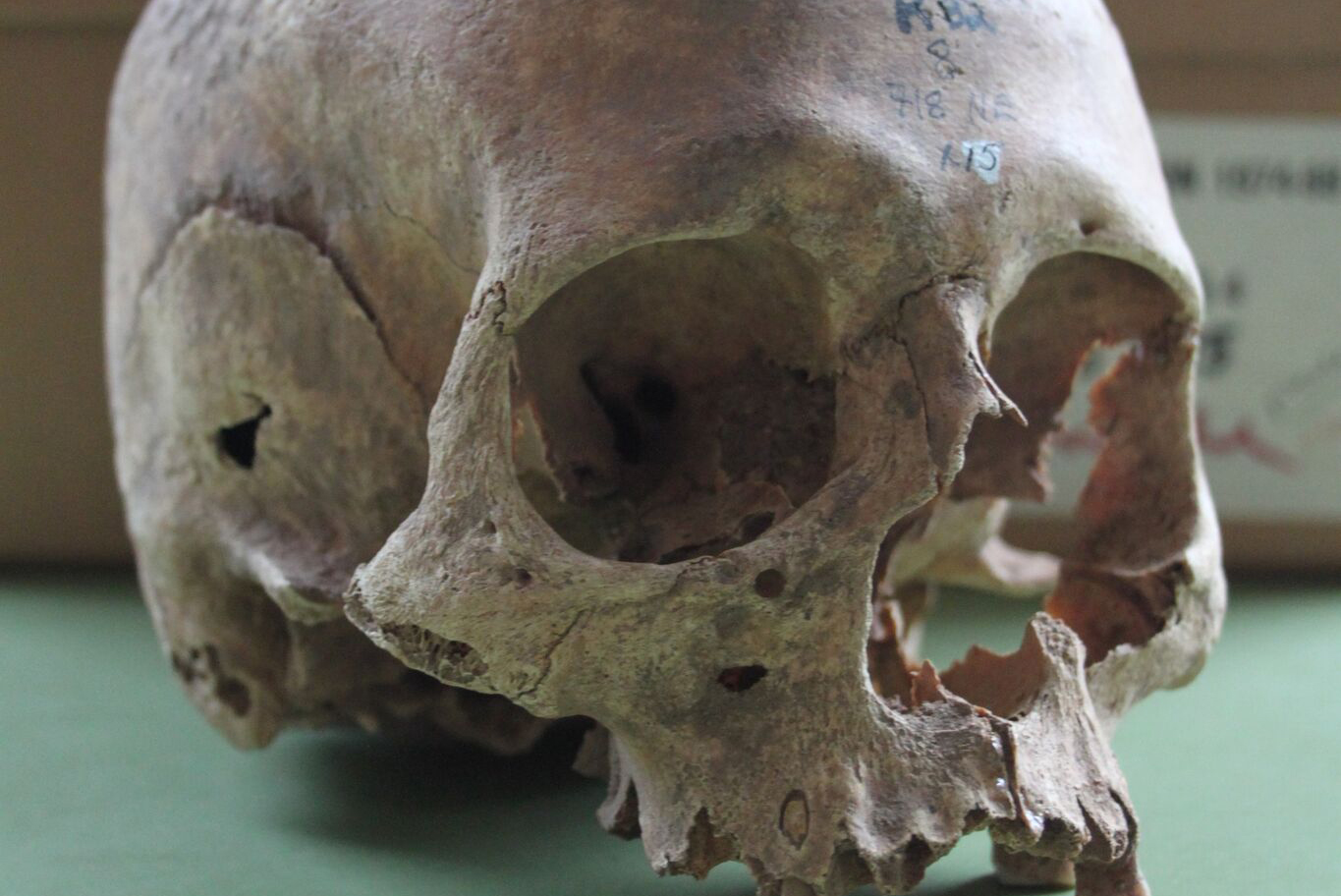One of the female skulls excavated from the Repton burial site Cat Jarman
In the 70s, a mysterious mass grave complex, containing the remains of hundreds of people, was unearthed by archaeologists in Repton, Derbyshire. The initial signs indicated that the burial site was associated with a Viking army, however, radiocarbon dating seemed to pour cold water on this hypothesis, suggesting that the bones had actually been left there over several centuries.
Now, new research has revealed that, in fact, the remains are consistent with a date in the 9th century. Based on these findings, Cat Jarman and colleagues from the University of Bristol's Department of Anthropology and Archaeology suggest that the mass grave was a burial site for the war dead of the Viking Great Army.
This military force – known by the Anglo-Saxons as the Great Heathen Army – was a powerful coalition of Norse warriors mainly originating from Denmark, although some came from Sweden and Norway, who banded together under a unified command to invade the four Anglo-Saxon kingdoms that constituted England in 865 AD.
Historical records indicate that this army spent the winter at Repton in 873 AD, driving the king of Mercia – one of the Anglo-Saxon kingdoms, centred on the midlands – into exile in the process.
Read the rest of this article...

No comments:
Post a Comment